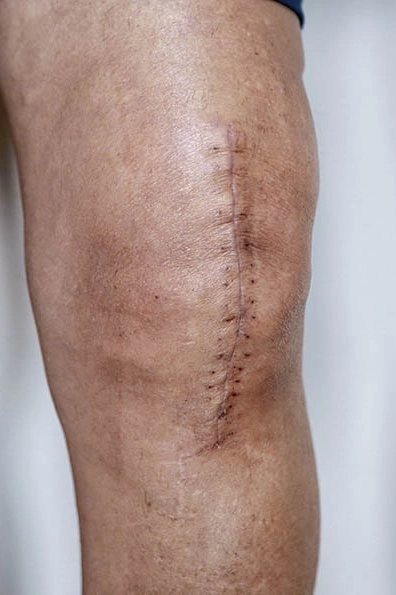Rehabilitation after orthopaedic surgery
Why is rehabilitation important after orthopaedic surgery?
Rehabilitation following orthopaedic surgery —such as knee or hip replacement— is essential for restoring mobility and quality of life. The success of surgery depends not only on the procedure but also on the recovery process, which requires optimal circulation, reduction of swelling, and effective tissue healing.
Common post-surgery symptoms
- Swelling around the surgical area
- Pain
- Stiffness and restricted movement
- Reduced mobility
- Scar tissue formation
- Tissue adhesions
- Loss of function
What happens during recovery?
Surgery inevitably causes some tissue damage —muscles, blood vessels, and connective tissue— triggering a natural inflammatory response. This helps clear waste products and supports healing. However, prolonged or poorly regulated inflammation can lead to complications such as chronic pain, stiffness, scar tissue, adhesions, and delayed recovery. These issues can significantly impact daily life, making activities like walking, standing, or climbing stairs difficult and affecting independence and wellbeing.
Causes of complications during recovery
Swelling after surgery is caused by fluid accumulation in the tissues. The lymphatic system works to drain excess fluid, proteins, and waste from tissues. When this system is overloaded or impaired, it can lead to:
- Prolonged swelling (lymphoedema)
- Delayed healing due to waste build-up
- Increased infection risk due to stagnant immune function
The role of the lymphatic system
Though less known, the lymphatic system is vital for removing waste, regulating fluid balance, and supporting immune health. A well-functioning lymphatic system is essential for strong immunity and optimal post-surgical recovery.
How Quadrivas Therapy supports rehabilitation after orthopaedic surgery
Quadrivas Therapy plays an important role in promoting recovery by enhancing blood circulation, activating the lymphatic system, and supporting the body’s natural healing processes. Through intensive manual techniques, Quadrivas Therapy provides support in several key areas:
Reducing swelling
By stimulating circulation and activating the lymphatic system, the therapy helps the body remove excess fluid and waste from the surgical area more efficiently.
Scar tissue recovery
Quadrivas Therapy softens scar tissue and helps prevent or reduce adhesions, improving the function of muscles and surrounding tissues.
Accelerating tissue healing
Improved blood flow delivers more oxygen and essential nutrients to damaged tissues, speeding recovery.
Supporting post-trauma symptom
The therapy provides an external stimulus to muscles, connective tissue, blood vessels, and nerves —similar to the beneficial effects of an intensive workout— helping to promote healing and recovery.
Boosting immune function
By activating the lymphatic system, Quadrivas Therapy enhances the body’s ability to fight infection, which is crucial after surgery.
Results and benefits of Quadrivas Therapy in orthopaedic rehabilitation
- Reduced swelling and pain
- Faster removal of waste products
- Softer scar tissue with fewer adhesions
- Improved muscle and tissue function
- Accelerated tissue repair through better circulation
- Prevention of long-term complications such as stiffness and functional loss
- Enhanced immune response and infection protection
- Restoration of the body’s natural balance
- Improved mobility and quality of life
Recovery after orthopaedic surgery involves more than rest and physiotherapy. Often, the body needs additional support to heal damage, reduce adhesions, and restore circulation. Quadrivas Therapy offers targeted support by activating the body’s self-healing capacity and improving the overall condition of tissues, blood vessels, and lymphatic vessels.

